Cinematographer: Lucky Cheng
Effects and Main Titles: Zev Deans
Choreography: Alta Finn
Production Design: Micki Pellerano
Neptunian Staffs: Frank Haines
Wardrobe Provided by: Christiana Key, Alix Brown, Windish-Michel
Production Assistants: Alice Millar, Carey Hu, Asa Westcott, Karli Malone, Gabrielle Muller
How did the two of you first come to collaborate, and what were your initial impressions of one another’s work?
Micki and I have known each other for about 13 years. We first bonded during a conversation about an old “pulp” paperback about Aleister Crowley called The Beast. He used to put on extravagant occult performance pieces, and I was in a bunch of them — playing improvised music or singing, always with intense symbolic costumes and props. Some of these were at the (now defunct) Live With Animals art gallery, where we both showed our artwork. So, our collaborations grew pretty organically, out of stuff we were doing anyway — like sitting around drinking wine, making magical sigils and listening to music. Micki’s drawings are super detailed and powerful… but I was also attracted to his films, which had this dark, yet colorful Kenneth Anger-type vibe, with heavy occult themes. Our first video together was actually made a few years ago for the song “Cascading Keys”, and was shot on Super8 film at both of our apartments; it totally captured the song’s essence. Having worked with him in these various contexts, I’ve come to really trust his vision, and know that he’s
someone who puts everything he has into his art.
Alice and I met in 2003 through our mutual friend Delia Gonzalez. Alice was reading this obscure paperback biography of Aleister Crowley with his portrait on the cover, and we became close over the years through our mutual interests.
Our first collaboration was for my film “Pantelia: Meditations on the Number Ten,” which also featured Kaballah as a main theme. Alice contributed some experimental music for it. That was 2005, I think.
How much free artistic reign was given to Micki on the project? Was there active collaboration and discussion about the aesthetics of the video, as Alice is a visual artist as well?
Micki came up with an amazing treatment for the video right away. Once I saw the treatment, I knew the vision he had for it would be stellar. I came up with some of the original inspiration, which stemmed from these old Serge Lutens and Richard Avedon ads from the late ’70s… the ads were these beautiful red-toned films for a Japanese clothing company called Ropé, and were extremely elegant and mysterious. We watched those ads together, and Micki actually recreated a lot of the shots from them – especially in the first “Opium Den” scene. We also collaborated on props, costumes, and even a bit of editing, but in general, I just trusted Micki’s vision.
The whole concept was inspired by themes within Alice’s song and her concept for the album. We sort of fleshed-out the ideas with homages to our favorite filmmakers like Curtis Harrington and Kenneth Anger. The Jun Ropé commercials from the 1970s were also a big inspiration.
Our first collaboration was for my film “Pantelia: Meditations on the Number Ten,” which also featured Kaballah as a main theme. Alice contributed some experimental music for it. That was 2005, I think.
The album, Into the Grey Salons, is inspired by a department store in Philadelphia. How are the themes from the record incorporated into this music video?
Well, there is the elevator… which is part of the “department store” imagery. The lyrics actually use the word “escalator”, rather than elevator… but the same idea comes across… the idea of travelling to different “inner planes” within this magical symbolic space. The “elevator operator” costume I wear while inside the elevator is also a nod to the department store theme of the record. The album deals a lot with exploring different identities. Micki focused on the lyric: “The planets open wide”, and we had the elevator going to different planets, rather than floors — each planet representing a different element of my psyche. It feels like this inner journey, activated by exploring and “trying on” these different aspects of Self, the way you would “try on” different clothing and identities in the mirror of a department store.
The elevator as the mode of transport through different planetary realms, just like an elevator to different floors in a department store, was inspired by this motif. And the general concept of identity-shifting through apparel and makeup. The store in question incorporates ancient Egyptian design elements and its architecture roused Alice’s interest in the esoteric.
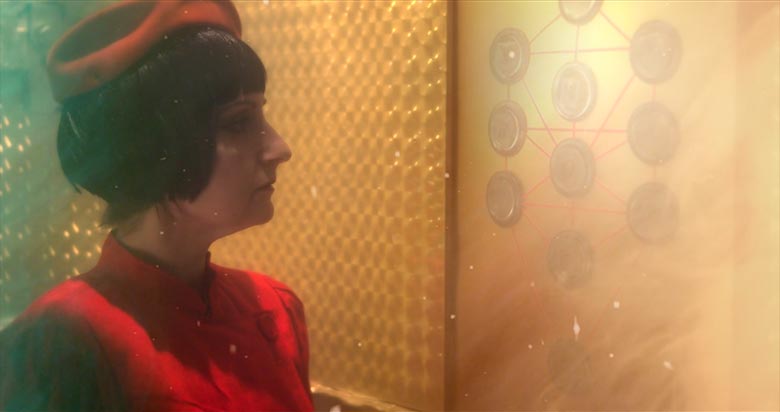
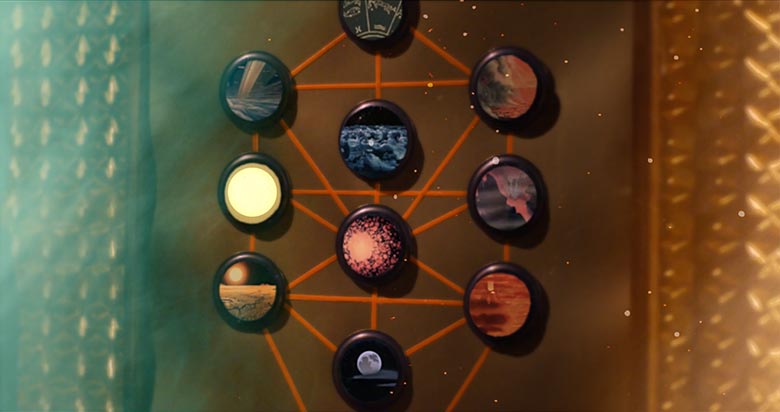
How does the Kabbalistic Tree of Life tie into the concepts of the record or just your personal interests and beliefs more generally?
Micki is probably more the expert on the Kabbalah, than I am… but I would say, that the Tree of Life can represent a personal and spiritual evolution, as you move up or down the Tree. That’s a lot to work out in the span of a short music video or a record album, but I think there is always a spiritual and personal evolution that takes place when you’re working on a piece of art that’s very intense and meaningful. It’s like you’re working something out… trying to purify and crystallize the meaning for yourself, of what you’re trying to express. In the video, I end up on the Sun — which feels like this ultimate place of glory and purification. It feels really good to end up there! Like I finally reach my “higher self” at the end, which is maybe just being comfortable with my Self, “as is”. The Tree of Life is a very involved concept (way more involved than I even comprehend, honestly). If you look closely at the elevator panel in the video, you’ll see the Kabbalistic diagram in thin red lines. Without going off on too many complicated tangents, I would say that the Tree of Life concept as it relates to the video and album, has to do with personal growth and evolution, and a striving for self-knowledge/gnosis.
In Kabbalah, the Tree of Life delineates different aspects of Divine Consciousness — and also human consciousness at a microcosmic level. And the spheres upon the Tree are meant to be ascended, like a sort of cosmic elevator. Each of the Spheres is associated with a certain astrological planet: Venus, Mars, The Sun etc. So the Kabbalistic system of psychic exploration was a suitable allegory for the concepts of self-exploration that Alice was referencing in her lyrics.
In the end, she reaches the Sun not via the elevator but in the lens of a microscope. This indicates that outward journeys are really inward journeys, or what Joseph Campbell termed “The Inner Reaches of Outer Space.”
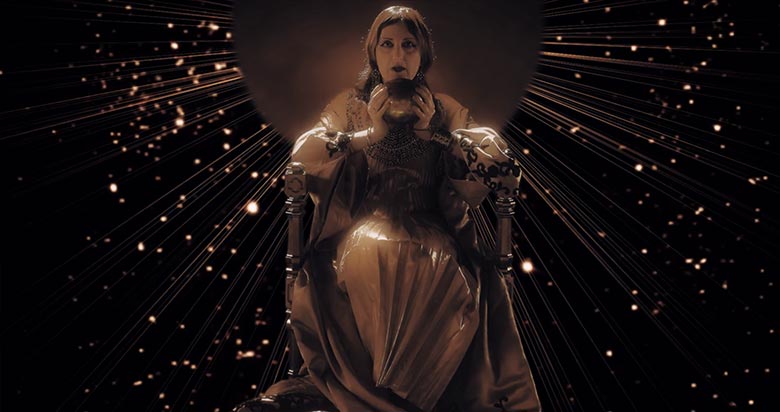
Is the incorporation of tarot imagery, such as thrones, vessels, etc. a symbolic decision or just visual or coincidental?
The imagery that we discussed most and made very intentional, was the imagery for each planet… I don’t know how obvious it is to the average viewer which planet is which in the different scenes, but a lot of thought went into this. The colors and vibe for each planet are very planned, as well as the props and costumes. Micki really made sure that the colors for this were representational and symbolically accurate. So, yeah — that part of the imagery was planned. As far as the vessels and thrones… some of that stuff just ties into Micki’s aesthetic… a lot of items came from Micki’s apartment, which just happens to be full of thrones and vessels! So the tarot imagery you’re picking up on, is really just an extension of his personal aesthetic, and mine. The gathering of props, fabrics, etc. was a huge part of the process for this video.
Mystical symbolism of this kind is vocabulary with a lot of overlap. Just as each of the Spheres on the Tree of life is associated with a planet, each of the 22 paths between the spheres is linked to one of the 22 Tarot Trumps, and also the 22 letters of the Hebrew Alphabet. These symbols are very alive and dynamic, so they have a way of taking control and recreating themselves as you work with them.
Related Article: Alice Cohen Animator Interview & Music Video Retrospective
– Alice Cohen, on images she gravitates towards
Can you comment on the push-and-pull of the masculine and feminine, particularly towards the midpoint?
Each planet does have a symbolic vibe, and that includes ideas of gender. For instance, Venus, the “prom” scene, is very feminine, whereas Mars, the scene with the muscle man, and Mercury, the “science boys” scene, are very masculine. Overall, the video feels like it balances the feminine and masculine aspects, somewhat evenly. The opening scene in the opium den, has an underlying feeling of sensuality and desire, but as the video progresses, I tend to wander through the scenes, simply as an observer, just looking. Since the video and the album are about exploring different identities, it makes sense that there would be this interplay of masculine and feminine energies, but the overall vibe is gender fluidity and playing with the idea of different stereotypes: “prom girls”, “muscle men” etc. The science scene is almost this throw-back “Bye Bye Birdie” type of traditional ’60s vibe… but the overall feeling is that they’re all just performances that we “try on” and “wear” for a time; they are disposable/interchangeable and we’re actually just “passing through” all of them.
Just like in Roman Mythology, planetary energies are either masculine or feminine, and associated with deities of either sex. The realms she visits were presented in terms of gender polarities, which is another main element of identity and its potential for shifting through self-revelation.
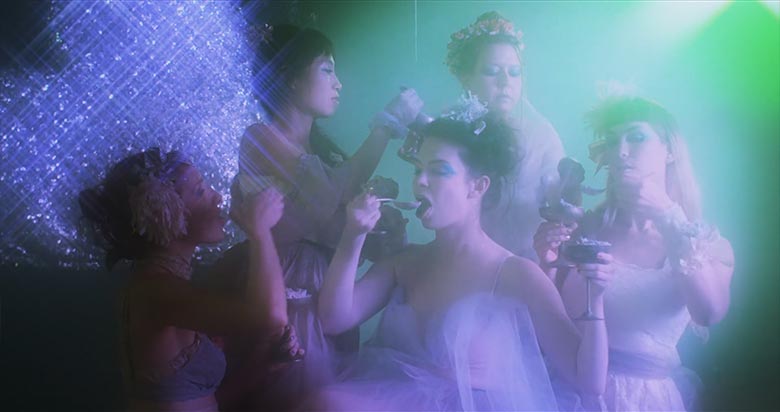
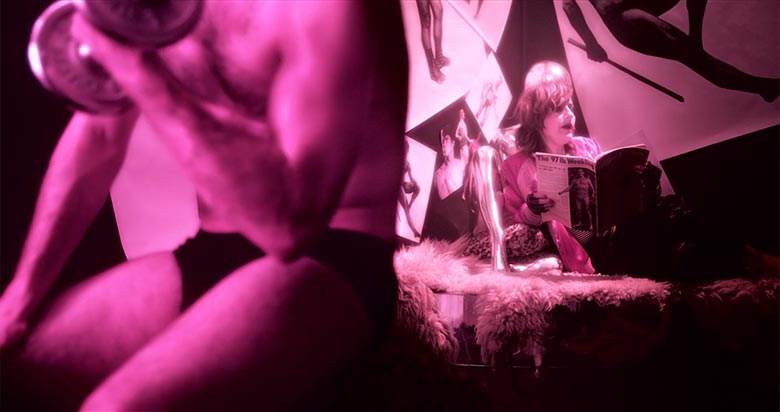
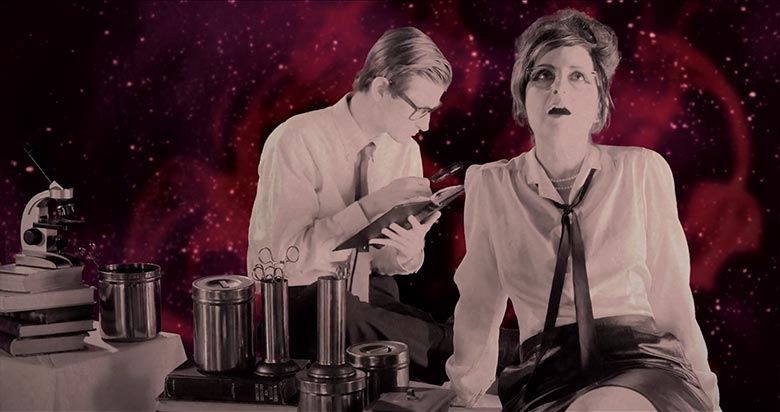
This video seems like quite the undertaking. How long did the various stages of it take?
It definitely was a huge undertaking. We spent a lot of time planning and prepping and making/gathering props, costumes etc. Thanks to the generosity of friends, we were able to do a lot with the small budget we had to work with. Our friends really stepped up, and were willing to be involved and donate their time. Crazily enough, we shot most of it in 3 days — but the days were like, 16 and 18 hour days, and we didn’t sleep much — especially Micki and Lucky Cheng (who shot it). They were sleeping at the space where we were shooting, and getting up 3 hours later to change sets and start shooting again. It was pretty crazy. We shot the elevator scene without a proper permit, and got kicked out by the building’s super after spending hours setting up the shot. Luckily, we got just enough footage for those elevator scenes.
The editing and special effects took quite a bit of time. We worked on and off for months, going back and refining it. We recruited Zev Deans to help with special effects and the awesome titles which he hand-lettered. Lucky and Micki worked on the color for quite a bit too. All together, this video took about 8 months to finish (though there were spans of time
when we weren’t working on it)… but it was a very long project to complete.
We shot over a period of three days. The cinematographer Lucky Cheng worked really hard to accomplish the different visual atmospheres of each planet through lighting and camera work. The editing aspect was an endeavor I revisited over a period of a few weeks. And the Special Effects were controlled by Zev Deans, himself an accomplished video director in the metal arena.
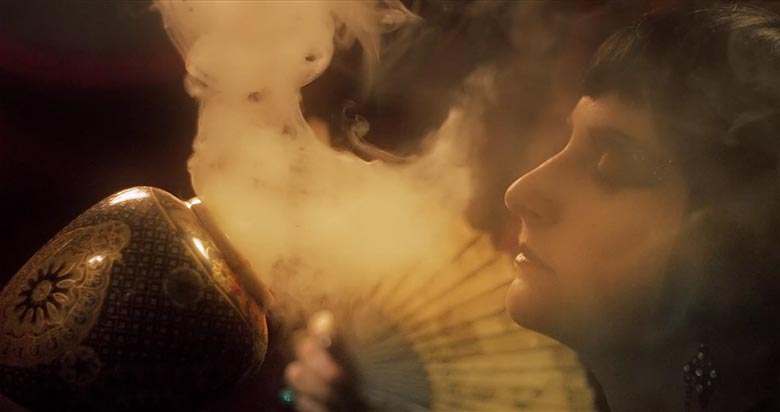
What was a highlight or a challenge?
The challenge was definitely just realizing this big, elaborate concept and vision, while having a relatively small budget to work with. What started out as “just” a music video, ended up more like a real film. There were a lot of different scenes all requiring a different set, actors, costumes, and set up — and only 3 days in which to shoot it! We wanted it to look more glossy and beautiful than stuff we had done in the past, so that made us strive harder for “perfection”. In the past, I was used to a more punk, DIY, low-budget aesthetic, but Micki had super high standards for this one, so we all just sort of worked our asses off, for every aspect of the production. (Trying to look presentable after 3 hours sleep was also my own personal challenge, haha!) The highlight was actually just seeing it all come together so beautifully, after all the hard work that went into it. When I first saw that Micki made the smoke go backwards in the Opium Den scene, I was just blown away. Such a simple but brilliant idea.
I think the main challenge and highlight was all the collaboration that was necessary. The choreographer Alta Finn did a great job in synchronizing movement as part of the narrative. Having so many people contribute to a project with a limited budget is a challenge, but it’s also very rewarding. It really reinforces what a strong sense of camaraderie there is among the filmmakers, artists, and beautiful people in our circle who are willing to contribute their skills for a project like this.
Why is this song so damn good?
Well, I thank you for that compliment. I have very little perspective on my own songs, but I’m glad some people are enjoying it! Musically it has a bounciness to the groove, a strong beat at the start of the track with that simple wah-wah guitar part… and a snake-like quality to some of the synth lines, that makes it fun, I guess. The vocal melody sort of keeps on moving in a way that carries the listener along, I suppose. It’s definitely a “fun” pop song, but hopefully has some depth and emotionality to it, as well as an ethereal vibe. Although it’s dance-pop music, I like to think that it has a cosmic element too. Someone recently posted this line from the song on their Tumblr: “And when you don’t know where to go, stay still inside the confusion”. So maybe there’s something there that people relate to.
To find a way to deal with your own personal confusion is a universal theme. I love the idea that some people might find some advice or calmness from the song. In any case, just glad some people seem to be enjoying it.
Because Alice is so damn good.
Pantelia: Meditations on the Number Ten (Directed by Micki Pellerano)
Alice Cohen – “Cascading Keys” Music Video
ALICE COHEN "CASCADING KEYS" from OLDE ENGLISH SPELLING BEE on Vimeo.
Ω

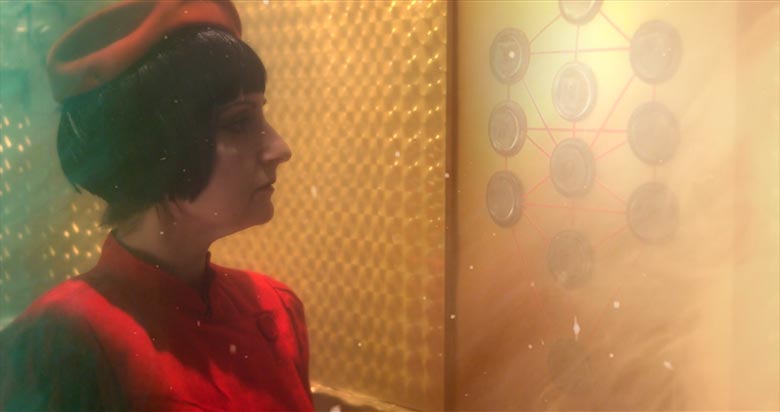
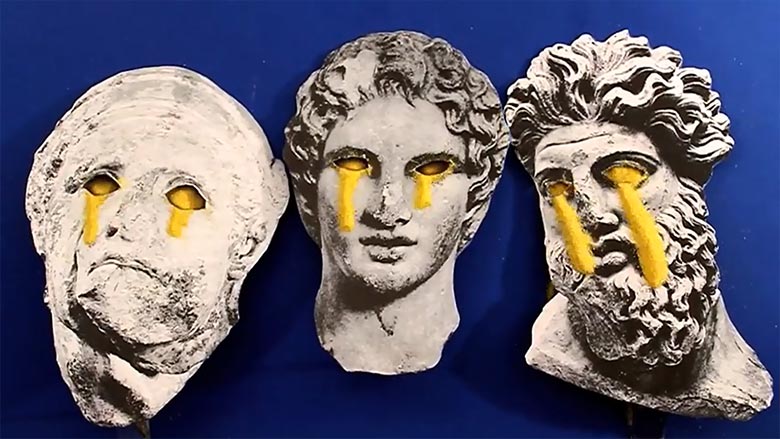




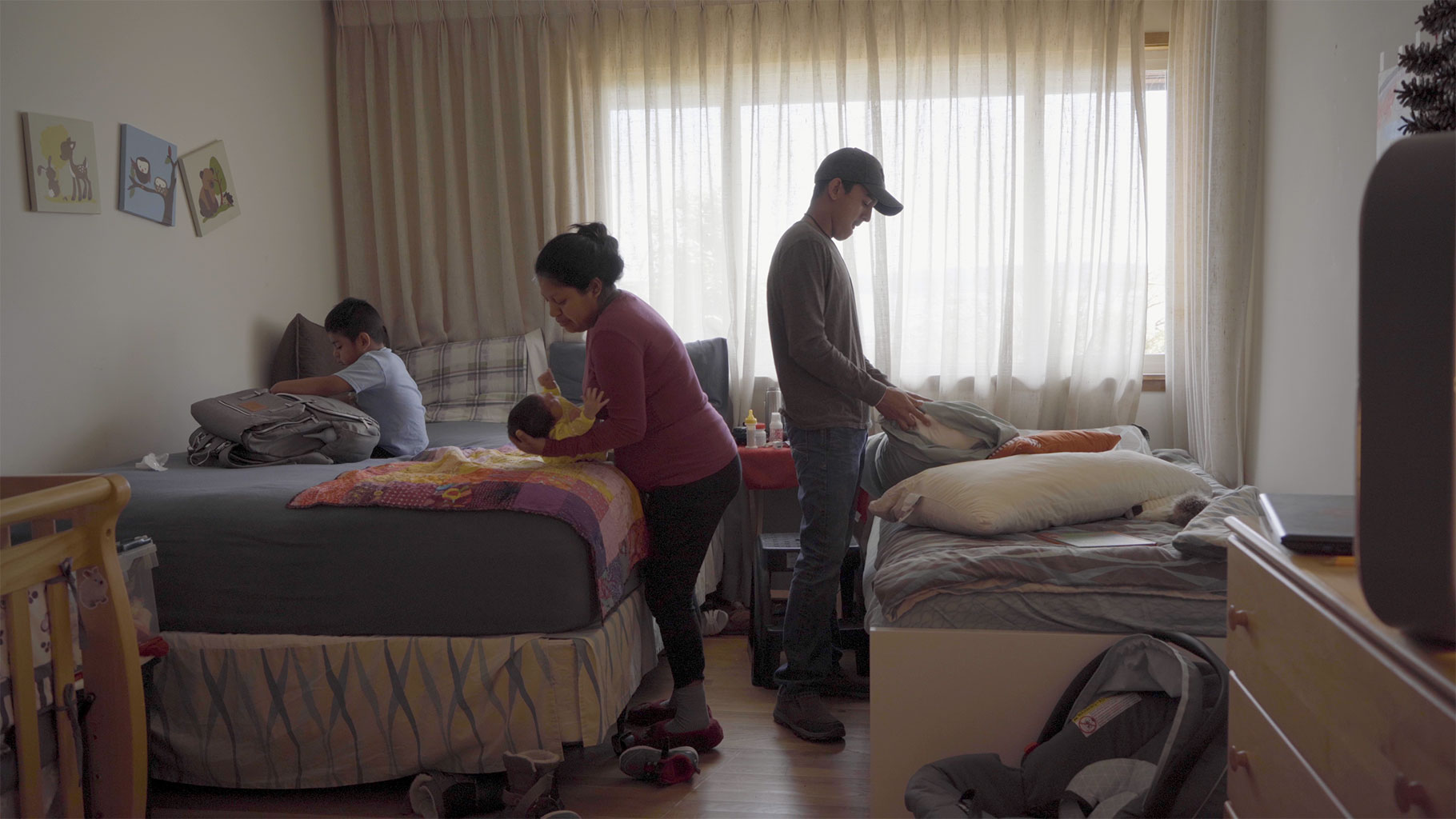
[…] Redefinemag: Alice Cohen – “Backwards” Music Video (w/ Musician & Director Micki … […]